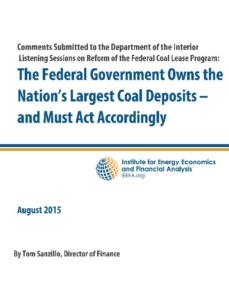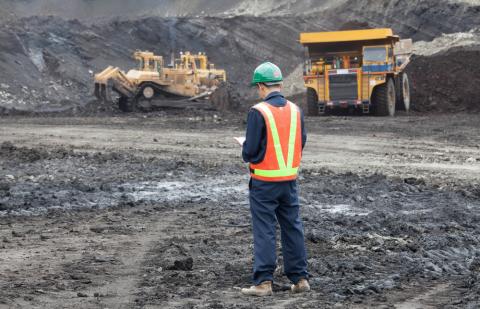As the BLM Begins Coal-Lease ‘Listening Sessions,’ a Few Hard Truths Must Be Heard
 U.S. taxpayers own the largest remaining domestic coal reserves in the country, valuable resources that sit in the Powder River Basin of Montana and Wyoming and that are vital to the energy security of our country.
U.S. taxpayers own the largest remaining domestic coal reserves in the country, valuable resources that sit in the Powder River Basin of Montana and Wyoming and that are vital to the energy security of our country.
The federal government, sad to say, has been an almost pathologically passive overseer of these resources (read more about that in this memo we just published and a letter we submitted today), having turned the reins of its vast coal-leasing program over to a handful of badly managed companies.
Public outcry over this unfortunate history is the impetus behind a series of public “listening sessions” the Bureau of Land Management is in the midst of conducting nationally (just this afternoon in Billings, Mont., this Thursday in Gillette, Wyo., next Tuesday in Denver, and on Aug. 20 in Gallup, N.M.).
U.S. taxpayers own the largest remaining domestic coal reserves in the country, valuable resources that sit in the Powder River Basin of Montana and Wyoming and that are vital to the energy security of our country.
The federal government, sad to say, has been an almost pathologically passive overseer of these resources, having turned the reins of its vast coal-leasing program over to a handful of badly managed companies.
TODAY, COAL MARKETS IN THE U.S. AND AROUND THE WORLD ARE IN A STATE OF FUNDAMENTAL, STRUCTURAL DECLINE, AND U.S. COAL COMPANIES IN PARTICULAR ARE IN DIRE FINANCIAL STRAITS. The trend is so deep and so wide as to be irreversible. Coal’s market share of electricity production in the U.S has shrunk to 39 percent from 51 percent eight years ago, and will probably shrivel further—to as little as 20 percent in the years ahead, given the growth of renewables, greater efficiency and investments in other forms of electricity generation.
Here at the Institute for Energy Economics and Financial Analysis we’ve come to know the dark side of the federal coal-leasing program all too well, having extensively researched and analyzed it, most thoroughly in “The Great Giveaway,” a report we published in 2012 that details how the coal industry has milked the Powder River Basin at the expense or ordinary citizens. Audits by the General Accounting Office and the Inspector General of the Department of Interior have since confirmed most of our findings.
What’s sorely lacking in the Powder River Basin coal industry is a fair-market leasing model informed by the acknowledgement that coal companies have for too long gotten a public resource for a publicly subsidized song, and then squandered it. The industry, even in its moment of monumental crisis today, has shown no interest in imposing the sort of discipline or rationality on U.S. coal markets that would support a viable business model in this day and age. Industry leaders, it seems, can’t be trusted to provide the leadership or the economic-development vision that would ease the transition that is taking place.
The federal government must become an active rather than a passive owner in taxpayer-owned coal resources across the Powder River Basin. It has the legal authority to do so and it must now show the political will to follow through.
Here, in the interest of U.S. taxpayers and, yes, even the coal industry, is a prescription for much of what needs to happen:
- A federal moratorium on federal coal leases, all of which are outdated and do not reflect fair market value;
- a ban on exports from the Powder River Basin;
- a replacement of all staff at Bureau of Land Management state offices that oversee coal leases.
- A federal take-back of leases on existing mines that produce low-quality coal and a federal assessment of higher-quality mines for financial solvency as part of broader steps toward protecting taxpayers from coal-company losses.
- Creation of a dedicated Department of the Interior research unit to monitor developments in the coal markets, and regular GAO audits and external review of the programs.
- Establishment of strong public-policy ties between the federal government’s new pollution-control standards and community economic development across the Powder River Basin, including new federal initiatives to assist workers and communities in transition.
Coal companies have run the show in the Powder River Basin for too long, and the result today is a region at risk because of industry mismanagement.
The time has come for change, and the time for change is now.
Tom Sanzillo is IEEFA’s director of finance.













